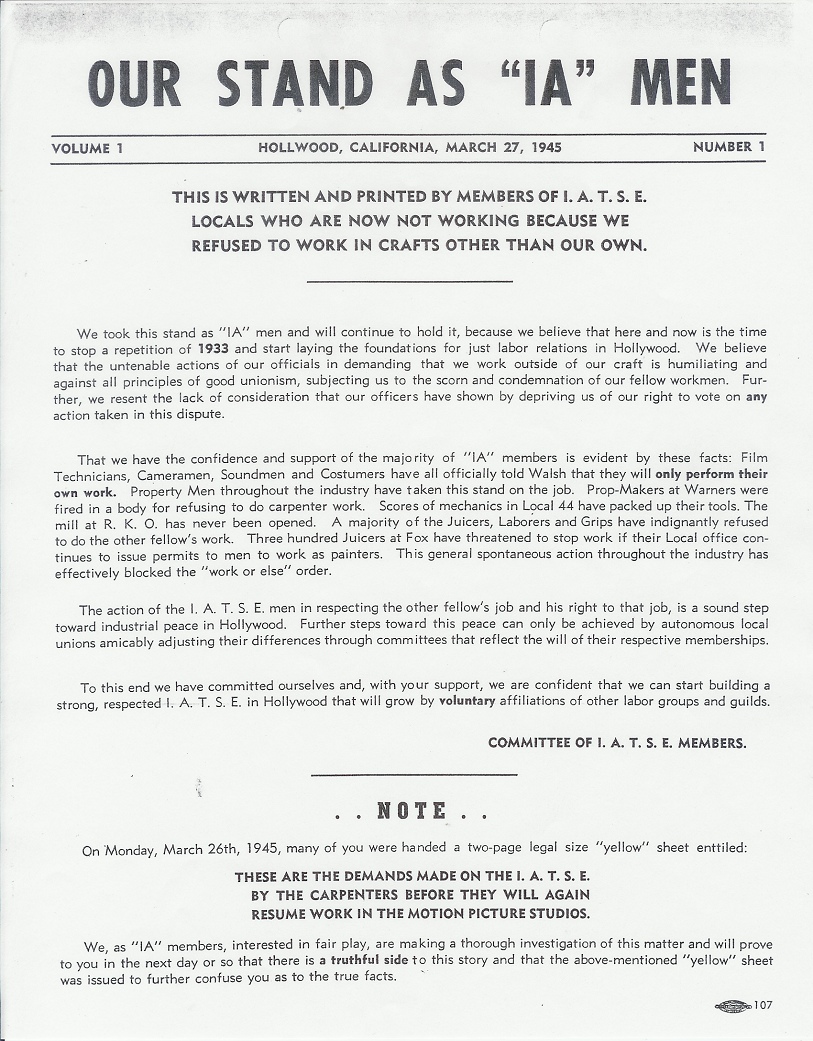Without labor nothing prospers.
– Sophocles
It is written in letters of fire that the day of injustice to the working men of our craft must soon draw to a close.
– Lee M. Hart, second president of the National Association of Theatrical Stage Employes, 1895
Happy Labor Day, everyone! I hope you are having a relaxing weekend, though more likely, you are taking this long weekend to work on this fall’s shows (like I am). Â Regardless of how you feel about unions in general, or IATSE in particular, there is no doubt that the history of IATSE has shaped the history of working in theatre and in props in America.
Propmen and Clearers
On July 17, 1893, seventeen men in New York City met for the first convention of the National Alliance of Theatrical Stage Employees. Property-men were part of the union. Before organizing, they made fifty cents a day, and were often made to work in other departments regardless of their skills. Continue reading A Brief History of IATSE

